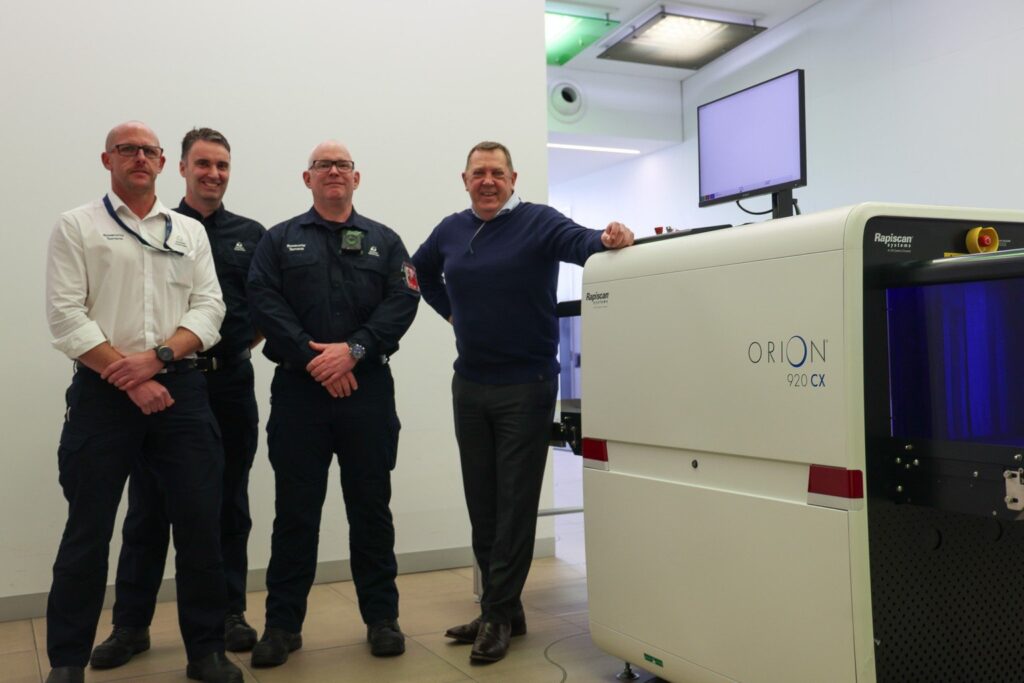
Tasmania has bolstered its biosecurity measures by installing state-of-the-art x-ray machines at Hobart and Launceston Airports. These advanced devices are designed to scan the hand luggage of arriving passengers for prohibited plant materials and other biosecurity threats that could jeopardize the island’s vital agricultural sector.
The introduction of this cutting-edge technology is a strategic move by the Tasmanian government to enhance its existing biosecurity framework. Primary Industries Minister Gavin Pearce highlighted the importance of this initiative, stating that the deployment of these machines will significantly improve the state’s ability to detect and manage potential biosecurity risks.
Strengthening Biosecurity Measures
Minister Pearce emphasized the role of the new x-ray machines in complementing the efforts of the state’s renowned detector dogs. “By implementing this new technology, our much-loved detector dogs can focus on carousel baggage while staff use the x-rays for passengers at the arrival gate,” Pearce explained. This strategic allocation of resources is expected to streamline the inspection process and increase efficiency.
The timing of this development is particularly crucial, as it coincides with the higher biosecurity risk months of spring and summer. During this period, plant pests and diseases become more active, posing a heightened threat to Tasmania’s agricultural integrity. “These new machines are ready in time for the higher biosecurity risk months,” Pearce noted, underscoring the proactive approach taken by the authorities.
A Comprehensive Biosecurity Strategy
Tasmania’s geographical isolation has long been a natural barrier against the introduction of harmful pests and diseases. However, the state has not rested on its laurels, continuously enhancing its biosecurity measures to safeguard its unique ecosystem. The new x-ray machines represent an additional layer of protection in this comprehensive strategy.
Alongside technological advancements, public vigilance remains a cornerstone of Tasmania’s biosecurity efforts. Authorities are actively encouraging residents and visitors alike to remain alert and report any unusual findings. “It’s a timely reminder for Tasmanians to keep an eye out for anything unusual in their fruit and vegetables and report any signs of fruit fly or other pests or diseases immediately to Biosecurity Tasmania,” Pearce urged.
Looking Ahead: Implications and Future Steps
The installation of these x-ray machines marks a significant step forward in Tasmania’s ongoing battle against biosecurity threats. By leveraging technology and community involvement, the state aims to maintain its reputation as a leader in biosecurity management.
As Tasmania continues to refine its biosecurity protocols, the success of these new measures will be closely monitored. The effectiveness of the x-ray machines could set a precedent for other regions facing similar challenges, potentially influencing biosecurity strategies on a broader scale.
In the coming months, authorities will assess the impact of the new technology and explore further innovations to enhance their biosecurity arsenal. The commitment to protecting Tasmania’s agricultural sector remains unwavering, with continuous efforts to adapt and respond to emerging threats.
Ultimately, the proactive steps taken by Tasmania serve as a reminder of the critical importance of biosecurity in safeguarding not only local agriculture but also the broader environment and economy.





